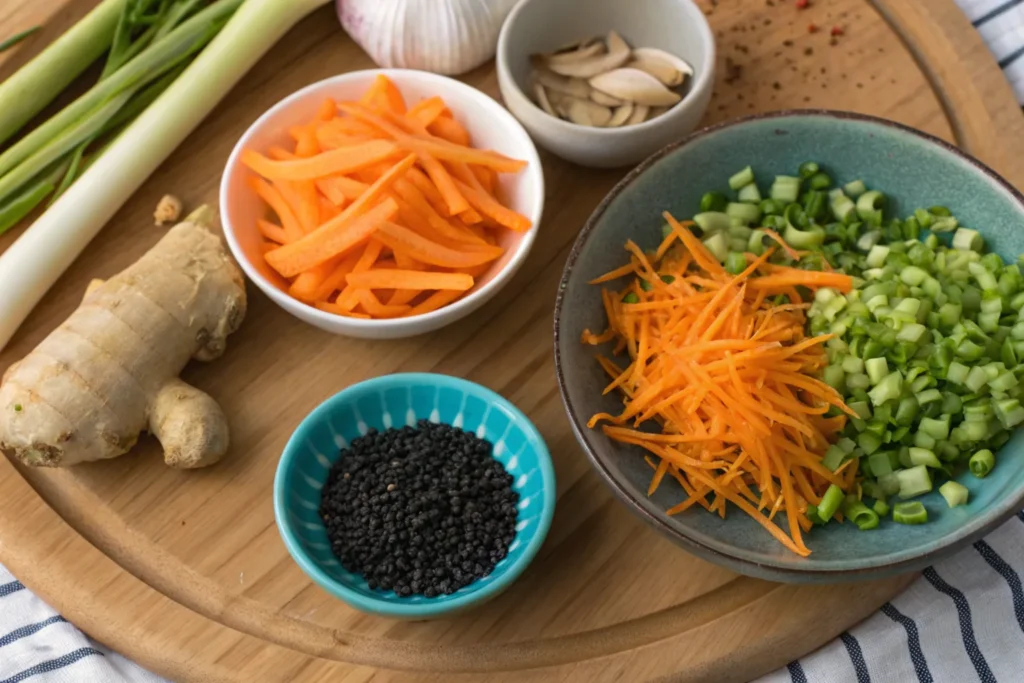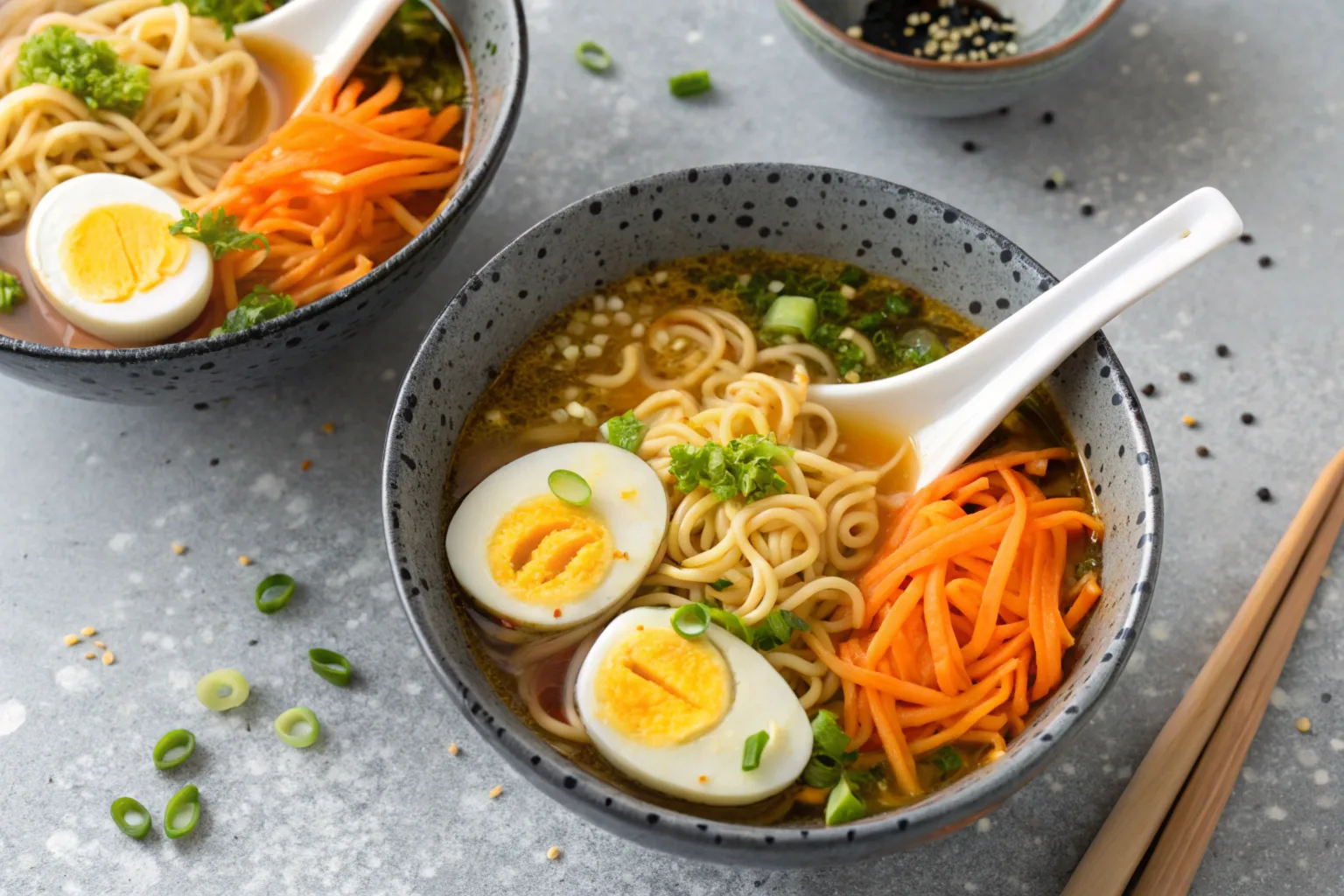Ah, the ramen bowl—it’s not just a vessel for noodles and broth. Nope, it’s way more than that! A ramen bowl embodies culture, tradition, and a delightful eating experience. Whether you’re slurping up spicy tonkotsu or savoring a veggie miso, the bowl matters. This article dives into the world of ramen bowls—their history, types, how to pick the best one, and even a guide to maintaining them. Let’s dig in!
The History and Cultural Significance of Ramen Bowls
Origins of Ramen and Its Bowls
Did you know ramen didn’t even start in Japan? Yep, it’s true! Ramen was inspired by Chinese noodle dishes that found their way to Japan in the late 19th century. But over time, Japan made it their own—perfecting everything from the broth to the noodles, and yes, the bowl.
The ramen bowl wasn’t just some afterthought either. As ramen became a cultural phenomenon, so did the bowls that held it. Japanese artisans began crafting ceramic ramen bowls designed to complement the dish’s aesthetic and practical needs—wide enough for toppings, deep enough for broth, and sturdy enough for slurping sessions.
Cultural Importance in Japan and Beyond
In Japan, ramen is serious business. Bowls aren’t just about function—they’re part of the experience. From the moment you see the dish, the bowl adds to the visual story. Think of all the Instagram-worthy ramen shots you’ve seen (we’ve all paused to admire the swirls of naruto, right?).
Outside Japan, the popularity of ramen has soared. From trendy ramen bars in NYC to tiny kitchens in Portland, the ramen bowl has become a symbol of comfort and culture. And honestly, who doesn’t need more slurpable joy in their lives?
Types of Ramen Bowls and Their Features
Ceramic vs. Plastic vs. Porcelain Bowls
Not all ramen bowls are created equal! The material of your ramen bowl can make or break your noodle game. Ceramic bowls are the go-to choice for many ramen enthusiasts. Why? They retain heat well, so your broth stays piping hot while you enjoy every bite. Plus, they often have a handmade vibe that screams authentic.
Plastic bowls, on the other hand, are lightweight and budget-friendly. They’re great if you’ve got kids at the table (or, let’s be honest, if you’re a little clumsy). While they don’t keep your noodles hot for long, they’re durable and easy to clean.
Porcelain bowls? Oh, they’re fancy! These are for those who love a sleek, glossy finish. They’re heavier than plastic and can also hold heat well. But be careful—they’re not as forgiving when dropped!
Unique Regional Styles of Bowls
Here’s where it gets really fun. Ramen bowls often reflect the regional styles of ramen they’re designed for. In Hokkaido, miso ramen bowls are wide and shallow, perfect for that thick, hearty broth. Down in Kyushu, where tonkotsu ramen reigns supreme, you’ll find deeper bowls designed to keep that rich pork-based soup warm.
And let’s not forget the patterns and designs. Many Japanese ramen bowls feature intricate, hand-painted motifs—like cherry blossoms or waves. They’re as much a feast for the eyes as the ramen itself!
How to Choose the Perfect Ramen Bowl
Key Factors: Size, Shape, and Material
Choosing the right ramen bowl can feel overwhelming with so many options out there. But don’t worry—it’s simpler than it looks. Start with the size. A good ramen bowl should hold at least 20-34 ounces to accommodate the broth, noodles, and all those delicious toppings.
The shape matters, too. Shallow bowls are great if you want your ingredients to be front and center (perfect for that Instagram snap!). Deeper bowls are ideal for broth-heavy ramen, keeping everything warm longer.
Material, as we’ve mentioned, is key. Ceramic and porcelain are best for heat retention, while plastic is great for casual, no-fuss meals. And hey, don’t be afraid to pick a bowl that matches your kitchen vibe—function meets style, right?
Best Bowls for Different Ramen Styles
Not all ramen is created equal, so your bowl shouldn’t be either! For a light Shoyu ramen, try a medium-sized bowl that lets the delicate soy flavors shine. For miso ramen, go with a wider, heavier bowl to handle those hearty toppings like corn and butter. And for Tonkotsu lovers? A deep bowl is a must to hold all that creamy, savory broth.
Also, don’t forget about multi-purpose bowls. Many ramen bowls double as great options for udon, soba, or even salads. It’s like getting a two-for-one deal!
Top 10 Ramen Bowls for 2024: A Buyer’s Guide
Popular Brands and Their Offerings

When it comes to choosing a ramen bowl, there’s a lot out there. Some brands stand out for their quality, durability, and stunning designs. Japanese brands like Noritake and Akaza are famous for their authentic ceramic options, while American retailers like Sur La Table also offer practical and stylish options.
For those who prefer minimalist aesthetics, check out brands offering neutral tones and clean lines. On the other hand, if you love a splash of color, many bowls come with intricate patterns inspired by traditional Japanese art. A great place to start your search is online marketplaces or specialty kitchen stores.
Affordable Options vs. Premium Choices
Not every ramen bowl has to break the bank. Affordable options like melamine bowls are perfect for casual meals or family dinners. They’re lightweight, kid-friendly, and surprisingly durable.
But if you’re a ramen aficionado, investing in premium ceramic or porcelain bowls might be worth it. These bowls not only elevate your noodle game but also make for stunning tableware. Look for handcrafted bowls—they add a personal touch to your ramen experience.
For more delicious recipe ideas to pair with your ramen, check out the garlic chili oil noodles recipe on Eminent Recipes!
The Art of Crafting Ramen in Your Bowl
Balancing Ingredients for Presentation
You don’t need to be a chef to make your ramen look amazing. Start with a solid ramen bowl—its wide, open shape helps showcase your toppings beautifully. Then, layer strategically: noodles first, followed by broth. Add toppings like sliced chashu, soft-boiled eggs, nori, and green onions in neat sections.
The key is balance. Don’t overload one side of the bowl, or it’ll look cluttered. A splash of chili oil or a sprinkle of sesame seeds can bring the whole dish together visually and flavor-wise.
Tips for Layering Ingredients in Ramen Bowls
Layering isn’t just about looks—it’s about taste, too! Place heavier toppings like pork slices on the noodles so they stay warm. Lighter ingredients, like bamboo shoots or sprouts, should go on top for crunch and freshness.
Want to save time? Prep your toppings ahead. Soft-boil a batch of eggs, slice your meat, and store them in the fridge. Then, when it’s ramen time, you can assemble your masterpiece in minutes.
Care and Maintenance of Your Ramen Bowl
How to Clean and Store Different Types of Bowls
Taking care of your ramen bowl isn’t just about keeping it clean—it’s about making it last. For ceramic and porcelain bowls, hand washing is best. Harsh dishwasher cycles can cause chipping or fade those gorgeous designs. Use mild soap and a soft sponge to keep your bowl in tip-top shape.
If you’re using plastic or melamine bowls, these are more forgiving. Most are dishwasher-safe, but double-check the manufacturer’s instructions. Pro tip: Avoid abrasive scrubbers on any bowl—they’ll leave scratches that are hard to ignore.
Storage is simple. Stack similar-sized bowls carefully to avoid chips or cracks. If your ramen bowl has a special glaze or hand-painted finish, consider using a soft cloth between bowls for added protection.
Prolonging the Life of Your Favorite Ramen Bowl
Got a chipped or cracked bowl? Sadly, it’s best to retire it, especially if you use it for hot soups. Heat can worsen the damage, and nobody wants broth leaking mid-slurp!
For long-term care, keep bowls away from sudden temperature changes—like going straight from hot soup to cold water. Treat your ramen bowl well, and it’ll serve you many comforting meals.
FAQs:
What is the ideal size for a ramen bowl?
The perfect ramen bowl holds between 20 to 34 ounces. This size ensures enough room for broth, noodles, and toppings without spills. If you like extra broth or toppings, go for a bowl closer to 34 ounces.
Can I use a ramen bowl for other dishes?
Absolutely! Ramen bowls are versatile and can double as serving bowls for pasta, salads, or even hearty stews. Their wide shape is perfect for meals that mix ingredients or need a little extra presentation flair.
What makes Japanese ramen bowls unique?
Japanese ramen bowls often feature handcrafted designs and high-quality materials like ceramic or porcelain. They’re built to enhance the dining experience—keeping your ramen warm and elevating the visual appeal of the dish. The attention to detail in Japanese craftsmanship is what sets them apart.
Conclusion
When it comes down to it, a ramen bowl is more than just a container—it’s a vital part of the ramen experience. From its origins steeped in Japanese culture to the wide array of modern styles available today, the humble ramen bowl has become a global symbol of comfort, tradition, and culinary creativity.
Choosing the perfect bowl isn’t just about size or material—it’s about finding something that suits your taste, whether it’s a sleek porcelain option for fancy dinners or a colorful, patterned ceramic bowl that adds a touch of personality to your table.
Caring for your ramen bowl ensures that it will last through many meals, whether you’re crafting a hearty miso ramen or experimenting with lighter shoyu varieties. And if you’re looking to up your ramen game, don’t forget the art of presentation—because half the joy of ramen is how it looks before you dive in!
So, next time you’re savoring a warm, flavorful bowl of ramen, take a moment to appreciate the bowl itself. It’s not just holding your meal—it’s holding centuries of tradition and a whole lot of heart.
For more noodle inspiration and recipes, check out other fun dishes like Garlic Chili Oil Noodles on Eminent Recipes!
Happy slurping! 🍜

